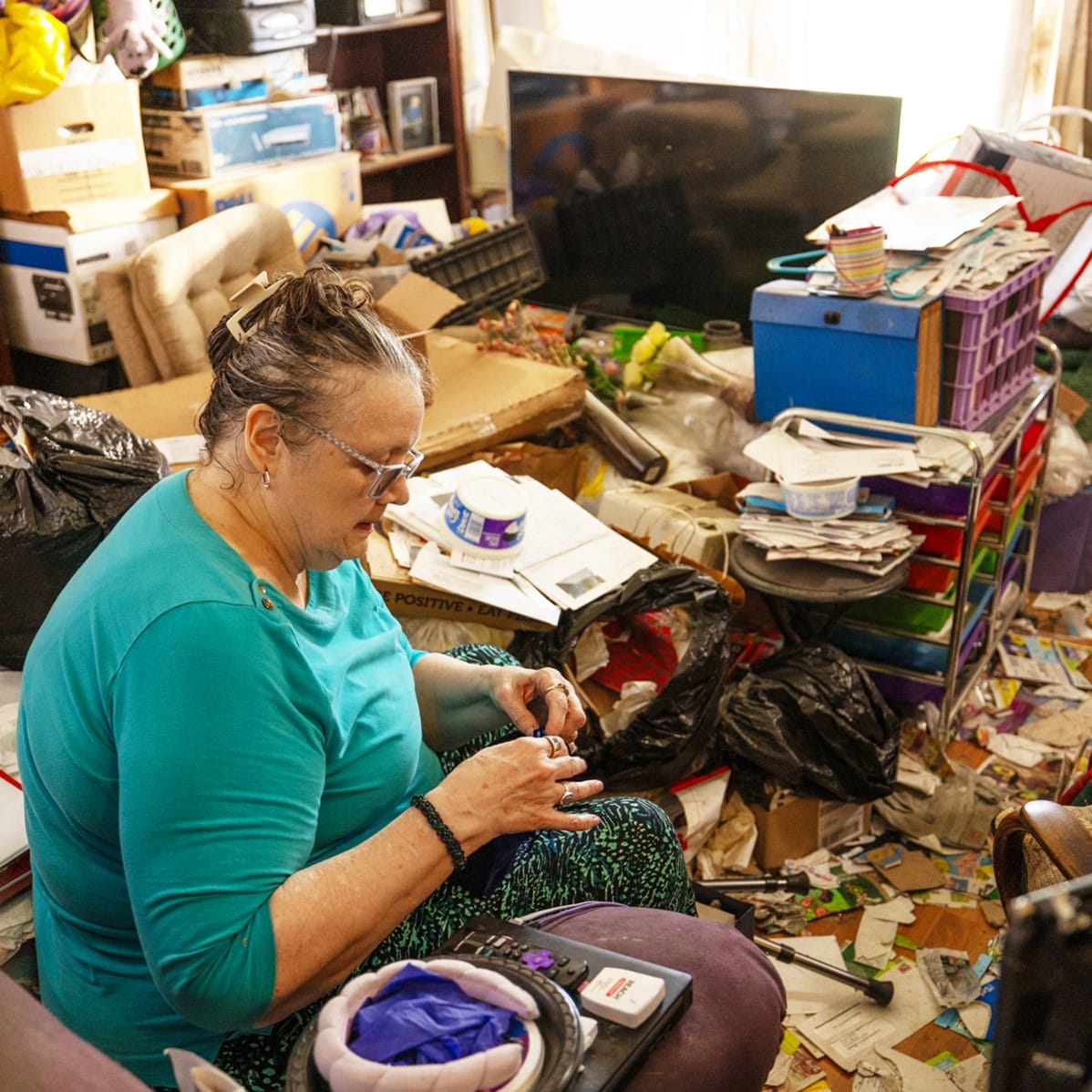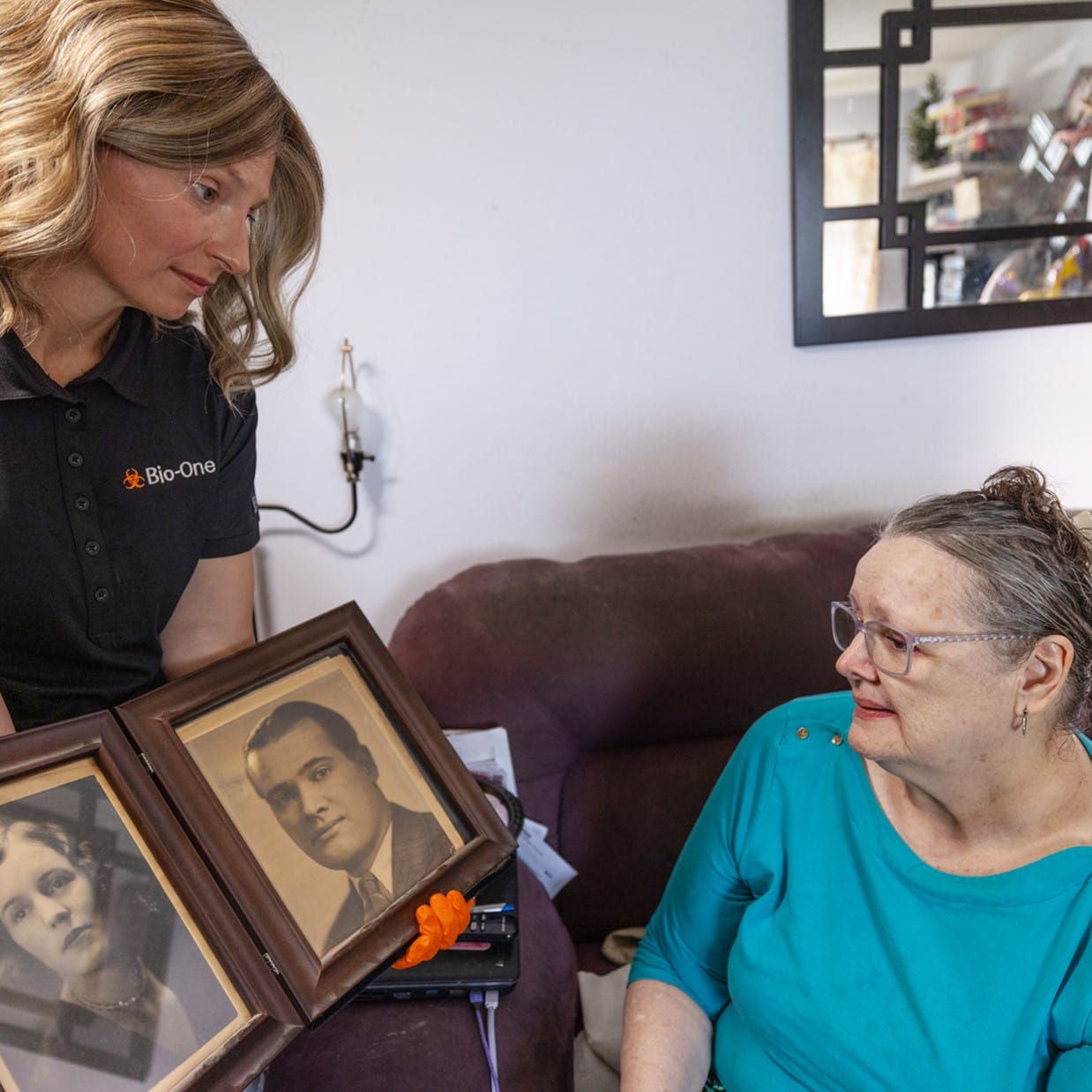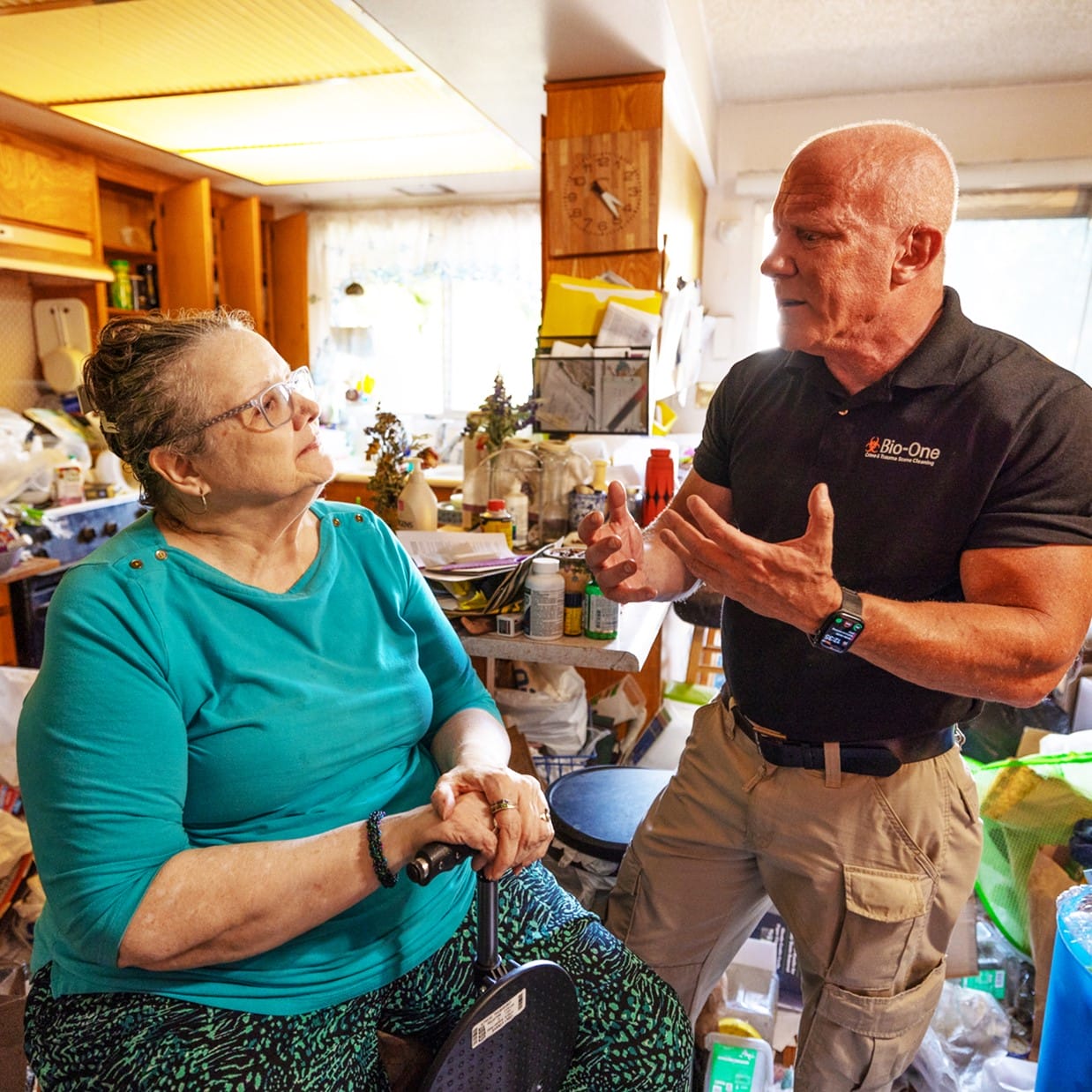
How compassion, not confrontation, can lead to real progress.
If you love someone who hoards, you’ve probably asked yourself, “Why can’t they just throw this stuff away?” It’s frustrating. It can feel like your loved one is choosing things over their own safety or happiness. But the truth is, hoarding isn’t just about being messy. It’s often related to a mental health disorder.
Behind the piles of stuff, there’s often a lot of pain. Your loved one might be struggling with anxiety, depression, trauma, or deep feelings of fear. The clutter you see is only part of the story. This Mental Health Awareness Month, let’s talk about what’s really going on—and how you can help.

Hoarding disorder is when someone has a very hard time getting rid of things, even items that seem useless or broken. They feel a strong need to keep things, and just thinking about letting go can cause panic or sadness.
It’s not about laziness. It’s not about being dirty. It’s about how the brain is trying to protect itself. For many people, keeping things feels like a way to stay safe or in control, especially if they’ve been through something hard in life.
Signs of hoarding disorder might include:
When someone you love is living in a home filled with clutter, your first thought might be, “I’ve got to fix this.” You might want to step in, start tossing things, or give them an ultimatum. After all, you care about them and you’re scared for their safety.
But here’s the hard truth: Confronting someone with a hoarding disorder in a harsh or forceful way almost never works. In fact, it can make the problem worse. Hoarding is deeply emotional.
If a person feels judged, cornered, or forced to let go of their things, they may shut down entirely or hold on even tighter.
You’re not alone in feeling overwhelmed. But there’s a better way to help.
Here’s what works better:
When you lead with love instead of force, you build trust, which opens the door to real change.
Progress might come slowly, but every step made with patience and compassion is a step in the right direction.

Loving someone with a hoarding disorder isn’t easy. You may feel tired, angry, confused, or even hopeless. You might be trying to help while also juggling work, family, and your own emotions. It’s a lot to carry.
You care deeply, and that’s why you’re here, trying to learn more. But you also need care. Your feelings matter, too.
So many people are in the same situation—quietly worrying about a parent, sibling, spouse, or friend struggling. It can feel isolating, especially if others don’t understand. That’s why it’s important to reach out and get support for yourself, not just for your loved one.
Here are some ways to take care of yourself:
At Bio-One, we’ve seen how tough this road can be for families. That’s why we show up with compassion, not judgment, for your loved one, and for you.
You’re not failing. You’re not alone. You’re doing your best. And that’s enough.

Sometimes, the situation is too big to handle by yourself. That’s where we come in.
At Bio-One, we’ve helped thousands of families just like yours. Our trained technicians know how to clean cluttered homes with care and compassion. We don’t judge. We listen, we understand, and we’re here to help.
We work gently and respectfully to make the space safer and more comfortable. And we involve your loved one every step of the way, so they feel more in control and less afraid.
If someone you love has a hoarding disorder, it can feel overwhelming. But with time, support, and understanding, things can get better.
Progress doesn’t happen all at once. But each kind word, each small step, and each moment of support makes a big difference.
And when you need help, we’re here.
How to Help a Loved One With a Hoarding Disorder
Why Cleaning a Hoarding Mess is a Job for a Professional Hoarding Cleanup Service
Hoarding: Recognizing the Signs and Seeking Help. Finding hope and motivationto clean up your home.
Hoarding disorder is a mental health condition where a person has a very hard time getting rid of things. They often feel strong emotional attachments to items and may become overwhelmed or upset when asked to let them go.
No. Hoarding is not the same as being messy or disorganized. It’s a mental health struggle that usually involves deep emotions like fear, anxiety, or past trauma.
For someone with a hoarding disorder, letting go of items can feel scary or painful. What might look like trash to others might feel safe or important to them. Cleaning without their consent can cause stress or damage trust.
Start with kindness and concern. Use “I” statements like “I’m worried about your safety,” and avoid blaming. Focus on how you can support them instead of trying to take control.
This is common. Hoarding can bring up strong feelings. Try to stay calm and patient. Don’t push too hard. Give them time, space, and support. It may help to talk with a counselor or mental health professional for guidance.
No. Throwing items away without permission can break trust and make the situation worse. It’s important to involve your loved one in every step and help them feel safe and respected.
Helping someone with a hoarding disorder can be exhausting. Make time for yourself, set healthy boundaries, talk to a trusted friend, and consider joining a support group. You matter too.
Yes. Many people with hoarding disorder can improve with the right kind of help. Therapy, support from loved ones, and professional cleanup services that understand the emotional side of hoarding can all make a big difference.
If the clutter is unsafe, overwhelming, or beyond what you can manage, it’s time to call in trained professionals. At Bio-One, we approach each cleanup with care, compassion, and respect for your loved one.
Yes. We understand how emotional hoarding can be. Our goal is to make the space safer and more livable while treating everyone involved with dignity. We don’t judge. We’re here to help.



